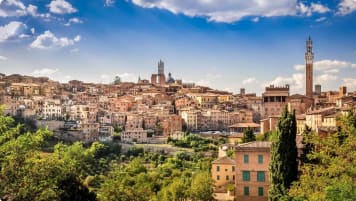Renaissance Milan, Italy
Article about Milan, one of the great cities of Northern Italy for mature and senior travellers to explore on a small group tour for couples and solo travellers. Learn about Renaissance Italy, Rome, the Romans as well as Florence and the Pilgrims walks offered by Odyssey.
14 Jul 21 · 5 mins read
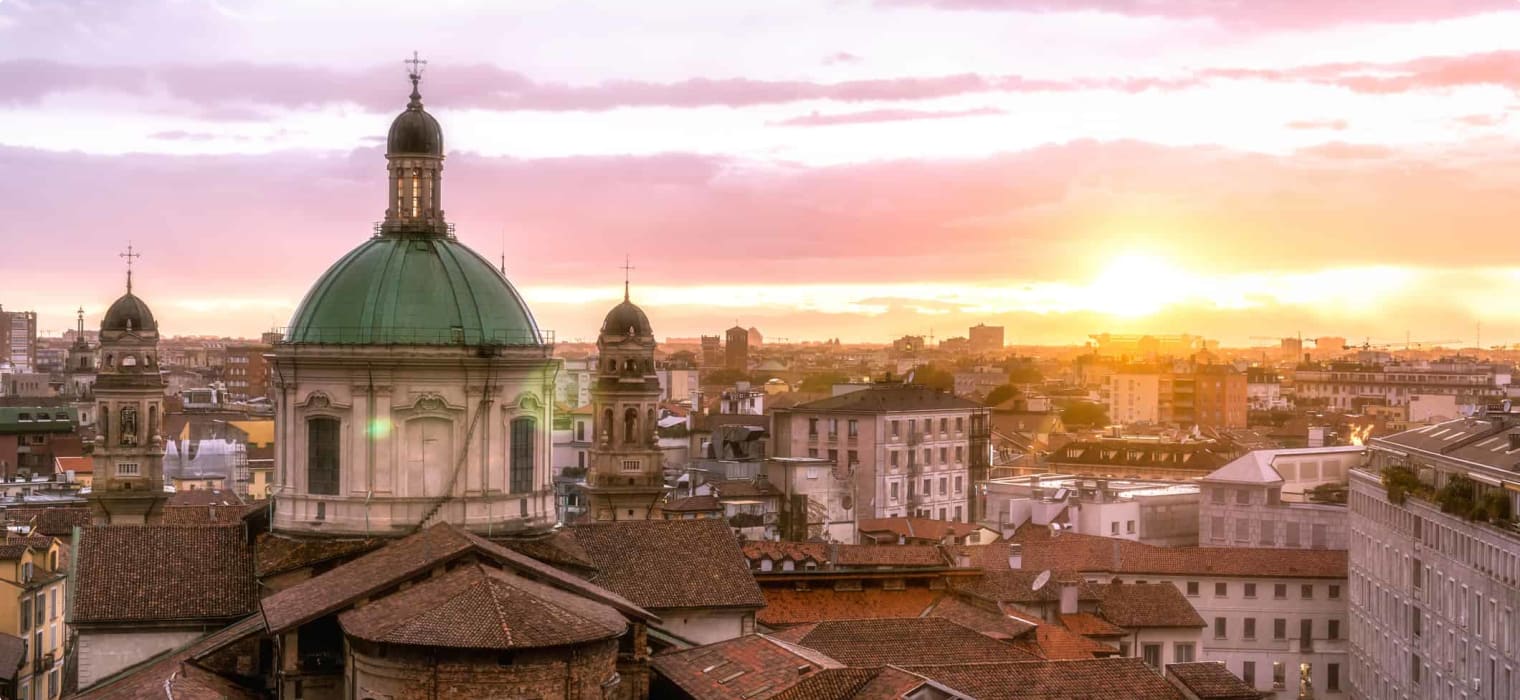
The History of Renaissance Milan
By Marco Stojanovik
The city of Milan is the capital of Lombardy in Northern Italy. It is located in the plains of Lombardy in the Po Valley, south of the foothills of the Alps Mountains and several lakes including Lake Como, Lake Maggiore, and Lake Lugano. It has historically capitalised on its location, strategically placed along trade lines and at the gateway to the Italian peninsula, to develop into the undisputed economic and cultural capital of Italy that it is today. This history is traced back largely to Renaissance times when it developed as a powerful city-state of military, economic, and cultural might.
Odyssey Traveller conducts a tour of Milan in two of our small group tours in Italy: a guided tour of the Lakes and Landscapes of Northern Italy; and a guided tour of Northern Italy and the Cinque Terre. On these trips we teach you about the history, culture, and architecture of Northern Italy as you take in the region’s fabulous natural beauty and picturesque towns and cities. Key sites in Milan include the Duomo di Milano (Milan Cathedral), Castello Sforzesco (Sforza Castle), Parco Sempione (Semplon Park), La Scala opera house, Santa Maria delle Grazie (‘Holy Mary of Grace’ Church), Leonardo Da Vinci’s Last Supper, and the historic shopping mall of the Galleria Vittorio Emanuele II. This article explores Milan’s Renaissance history to assist your city tour.

Italian City States Emerge
From the 11th century a number of many different city-states began to develop on the Italian peninsula and declare their independence, either from the church of from the Holy Roman Emperor. Included were a number a number of smaller cities, as well as five particularly powerful ones: Milan, Florence, Venice, Naples, and the Papal States.
The movement was able to occur in Italy as much of its ancient Roman institutions and heavily-populated urban settlements had survived and continued after the fall of the Western Roman Empire. Life in the rest of Europe, on the other hand, had become more rural dominated by a feudal system of servile labour on huge tracks of land. This system played a relatively smaller role in Italy as its many cities grew into large prosperous trading metropoles.
Milan was a particularly excellent centre for trade due to its northern location and connection to other European regions. The city became an independent democratic state in 1117 as part of the wider Comuni independence movement. It joined cities across Northern Italy rising in opposition to the hegemony of the German Emperors. Briefly taken back by Emperor Frederick I Barbarossa in 1162, Milan again regained independence in 1176.
Visconti Dynasty
A period of democratic governance lasted in many of the city-states until the late 13th century when it was replaced by the era of the signoria – government run by a lord. In Milan one of the most famous Renaissance dynasties emerged in 1377 when Archbiship Ottone Vicsonti seized power. The Visconti family would go on to rule as lords until 1447.
The Visconti embarked on a family policy of territorial expansion whenever possible. At the height of their power they dominated all of northern Italy except Venice and much of Central Italy with important annexations of Verona, Vicenza, Bergamo, Brescia, and Parma.
The Visconti were also great patrons of the arts. Most notably the construction of the Duomo di Milano (Milan Cathedral) began in 1386 as a reward to the noble and working classes. The grand and impressive cathedral has since stood as the symbol of the city. Dedicated to the Nativity of St Mary (Santa Maria Nascente), Milan’s Duomo is the largest church in Italy and seat of the Archbishop of Milan. The cathedral stands at Piazza del Duomo, the main piazza (square) in Milan.
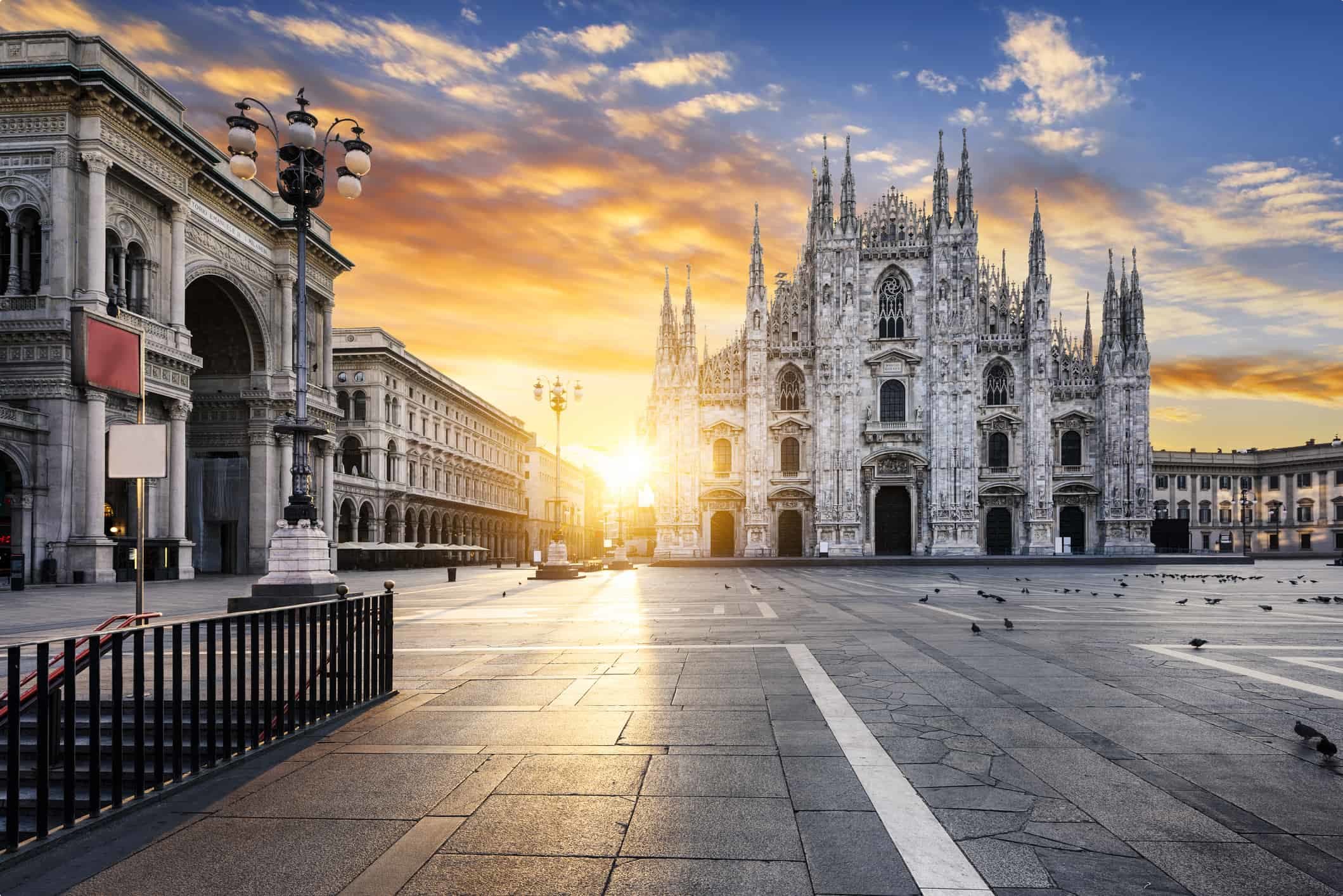
Sforza Dynasty
When the last Visconti died in 1447, the Milanese people worked to establish the Ambrosian Republic. The Republic however was to be short-lived. In 1450 Francesco Sforza, a military leader originally hired to defend the city against external threats, turned on the city and established the new Sforza dynasty to rule Milan for years to come.
The city-state reached its height under the Sofrza family leadership as one of the main centres of the Italian Renaissance. Economically the city prospered specialising in silk and wool trade, benefitting from its geographic location in Northern Italy to control large portions of trade in the surrounding regions.
With the economy prospering the Sforza family used much of the wealth to patron architecture and art for the city. Several prominent buildings emerged during this time including the Castello Sforzesco (Sforza Castle), Santa Maria delle Grazie (‘Holy Mary of Grace’ Church), and Santa Maria presso San Satiro (Saint Mary near Saint Satyrus), while the Duomo Cathedral was enlarged.

Renaissance artists came to work for the city attracted by its glamour and wealth, most notably Leonardo da Vinci who produced his famous painting ‘The Last Supper’ for the city. Leonardo da Cinci’s painting was commissioned by the Duke of Milan Ludovici Sforza in the 1490s to be the centrepiece of the delle Grazie.
Despite its accomplishments the Sforza dynasty was short lived. In an effort to reduce the power of his enemies in the royal family of Naples, Ludovici encouraged the French King to come to Italy to assert his claim on the Neapolitan thrown. This strategy ultimately backfired when, in 1499, the French King Louis XII also invaded Milan. A centuries-long period of foreign domination by different powers had begun in the Italian peninsular.
Milan City Tour
You can visit Milan as part of our tours of the lakes and landscapes of Northern Italy and Northern Italy and the Cinque Terre. Odyssey Traveller has been serving global travellers since 1983 with educational tours of the history, culture, and architecture of our destinations designed for mature and senior travellers. We specialise in offering small group tours, partnering with a local tour guide at each destination to provide a relaxed and comfortable pace and atmosphere that sets us apart from larger tour groups. Tours consist of small groups of between 6 and 12 people and are cost inclusive of all entrances, tipping and majority of meals. For more information, click here, and head to this page to make a booking.
Articles about Italy published by Odyssey Traveller
- The Roman Empire
- Who were the Roman Emperors
- Questions About Italy
- Trip Advice for Travellers going to Italy
- 10 Great Books to Read Before You Visit Italy
- as well as more articles on Italy here
External articles to assist you on your visit to Italy
Related Tours
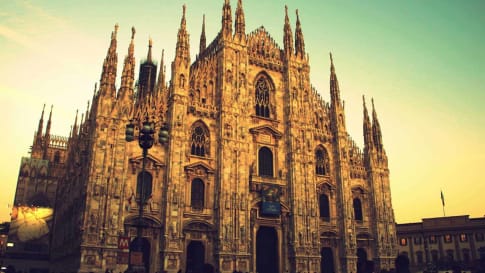
14 days
Sep, MayLakes and Landscapes of Northern Italy | Short Small Group Tour for Seniors
Visiting Italy
Our small group tour begins in the cosmopolitan city of Milan and ventures to 2 of the region's lakes - Garda and Maggiore. Our tour uncovers a wealth of natural beauty, castles, serene waters, snow-capped mountains, and breathtaking scenery.
From A$9,225 AUD
View Tour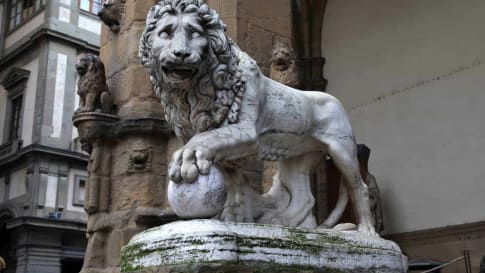
21 days
Apr, Aug, MayRenaissance Italy Tour: Story of Five Families
Visiting Italy
Explore Renaissance Italy on this small group tour though an examination of five significant city states. Florence, Urbino, Ferrara, Mantua and Milan were all dominated by families determined to increase the status of their city through art and architecture. Spend time coming to know the men and women who helped create the cities, as well as the magnificent legacy they left behind.
From A$14,295 AUD
View Tour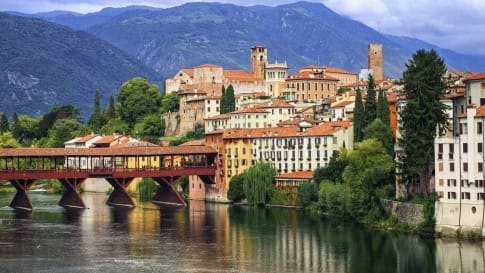
22 days
Oct, AprTour of Northern Italy's Lakes and Alps
Visiting Italy
A European tour to the stunning Lakes Region of Italy. Your travel experience begins in Milan, daily itineraries include two of the region’s lakes - Garda and Maggiore, plus the Roman villa Desenzona and a day in Cinque Terre. Local guides share experience and knowledge with you on this escorted small group tour for couples and solo travelers.
From A$14,895 AUD
View TourArticles about Italy

Secrets of Venice: A History of Espionage
Secret Venice: The Council of Ten and Medieval Espionage The city-state of Venice emerged on a lagoon from the ruins of the Roman and Byzantine empires in the 9th century and grew to become the greatest…
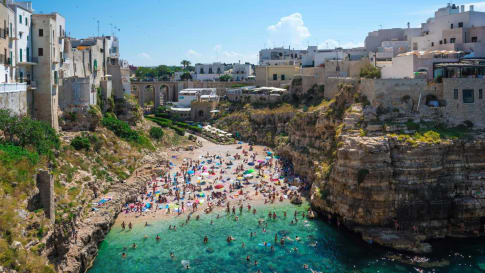
Southern Italy
Southern Italy: from Magna Graecia to Italian Unification When people think of Italy, Rome, Venice, and Florence often come to mind first. Yet, the country offers much more beyond its northern attractions. Venturing south from…
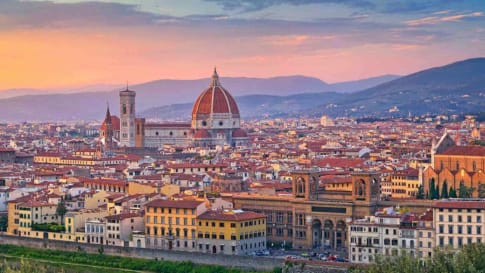
History of a City: Florence, Italy
Florence or Firenze, article provides an overview of the history from inception from the Romans to Mussolini with plenty of the Renaissance covered. Includes a list of Museums and places to see in Tuscany. Background material for a small group package tour to Italy or long stay in Florence.
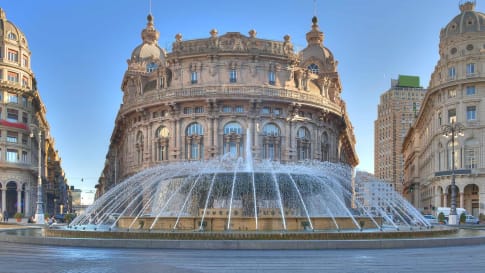
History of Genoa, Rival to Venice
In this article, we will look at the history of Genoa, and its rivalry with Venice that led to several wars fought between the two city-states in the 12th to 14th centuries.
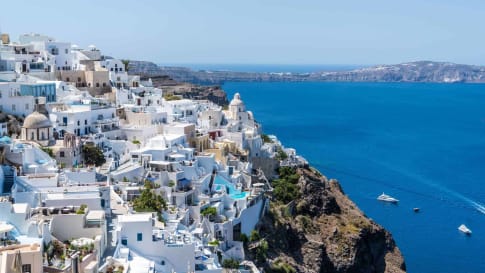
History of Santorini
History of Santorini: From the Minoans to the Greek Republic The history of the Greek islands of Santorini (or Thera) stretches back to the Neolithic Era more than 3,000 years ago. A place of great importance…
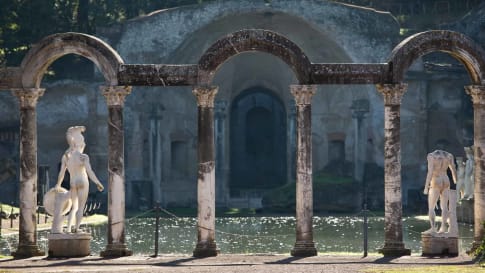
Ancient Roman Luxury Villas, Italy
Roman houses for wealthy people built in the times of the Republic and the Empire. Popular locations included on the lakes of Northern Italy, in the hills to the East of Rome, on the bay of Naples, and outside of Pompeii.

